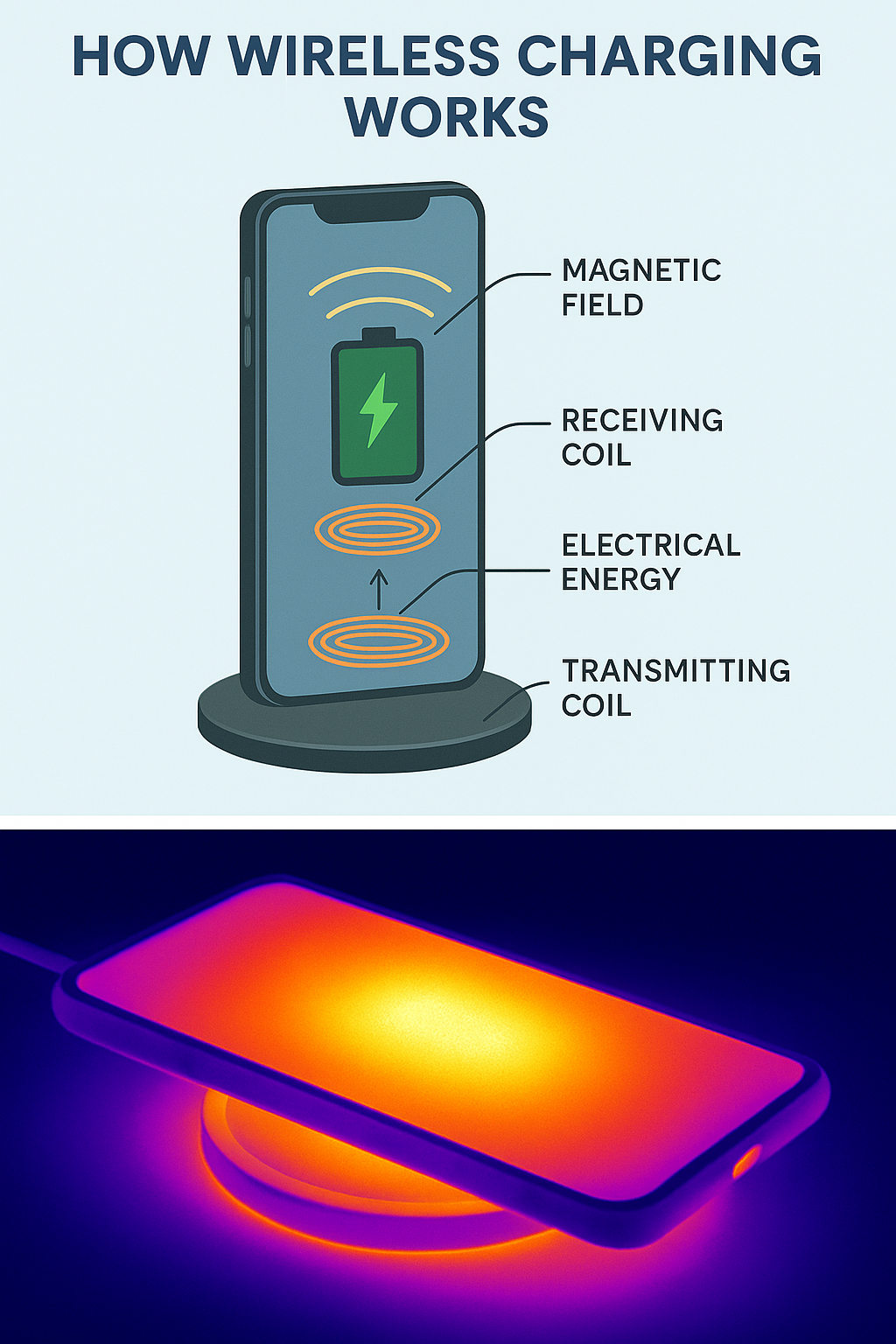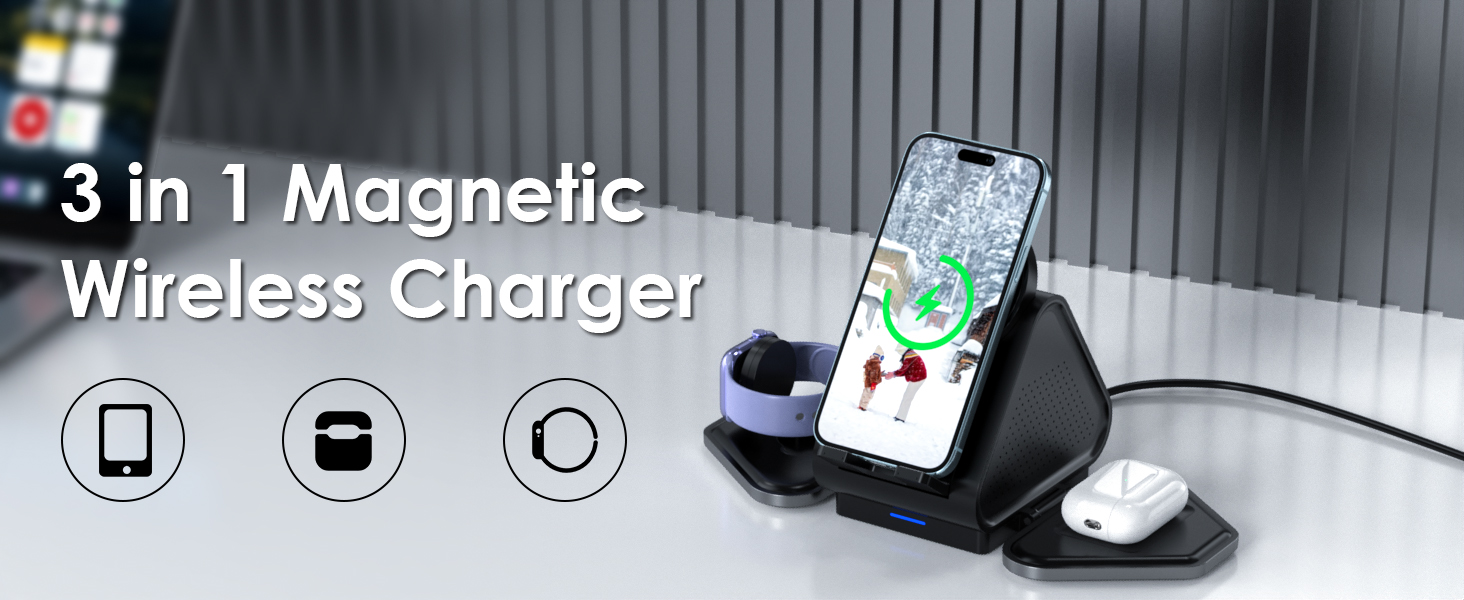Wireless charging has become increasingly popular due to its convenience and the elimination of cables. However, questions remain about its impact on battery health. In this guide, we'll explore the effects of wireless charging on batteries, with a focus on devices like iPhones, Samsung's Galaxy A15, and iPads.
Key Takeaways:
- Wireless charging generates more heat than wired charging
- Heat is the primary factor affecting battery longevity
- Proper charging habits can mitigate potential damage
- Device-specific considerations are important

Understanding Wireless Charging Technology
Wireless charging operates on the principle of electromagnetic induction. A charging pad generates a magnetic field, which your device's receiver coil converts into electrical energy to charge the battery. While this method is convenient, it introduces certain challenges compared to traditional wired charging.
| Technology | Efficiency | Heat Generation | Charging Speed |
|---|---|---|---|
| Wired Charging | ~90% | Low | Fast |
| Standard Wireless | ~70% | Moderate | Medium |
| MagSafe | ~80% | Low-Moderate | Medium-Fast |
Heat Generation and Battery Health
One of the primary concerns with wireless charging is heat. Studies have shown that wireless charging can produce more heat than wired methods due to energy loss during the transfer process. Elevated temperatures can accelerate battery degradation over time.
Did You Know?
For every 10°C increase in temperature above normal operating range, lithium-ion battery degradation can double. Most smartphone batteries are designed to operate optimally between 0°C and 35°C.
Device-Specific Considerations
iPhones and MagSafe Technology
Apple's MagSafe technology, introduced with the iPhone 12 series, uses magnets to align the device with the charger, improving efficiency and reducing heat generation. However, even with MagSafe, it's advisable to:
- Monitor your device's temperature during charging
- Remove thick cases that might interfere with charging
- Avoid charging in direct sunlight or hot environments
Samsung Galaxy A15
The Samsung Galaxy A15 does not natively support wireless charging. Users can add this functionality through third-party accessories, such as a magnetic USB-C wireless charging kit. Important considerations include:
- Choose high-quality, Qi-certified kits
- Verify compatibility with your specific device model
- Be aware of potential impacts on charging speed
iPads and Wireless Charging
Currently, iPads do not support wireless charging. There have been discussions about potential future models incorporating this feature, but as of now:
- All iPads require wired charging
- The larger battery capacity makes wireless charging less practical
- Future models may introduce this feature for convenience
Best Practices for Wireless Charging
Use Certified Chargers
Opt for Qi-certified chargers to ensure safety and efficiency. Look for official certification marks and buy from reputable manufacturers.
Monitor Temperature
Avoid charging in hot environments and remove cases that may trap heat. If your device feels excessively warm, pause charging.
Optimal Charge Levels
Keeping your battery between 20% and 80% can help prolong its lifespan. Consider using smart plugs or timers to manage charging duration.
Accessories to Consider
Choosing the right accessories can significantly improve your wireless charging experience while protecting your battery:
-
MagSafe Charger Stand (for iPhone 12 and later)
Offers efficient charging with proper alignment, reducing heat generation. Look for models with built-in cooling fans for better temperature management.
-
Magnetic USB-C Wireless Charging Kit (for non-wireless devices)
Adds wireless charging capability to devices without native support. Ensure compatibility with your device's power requirements.
-
Thermal-Regulating












































































